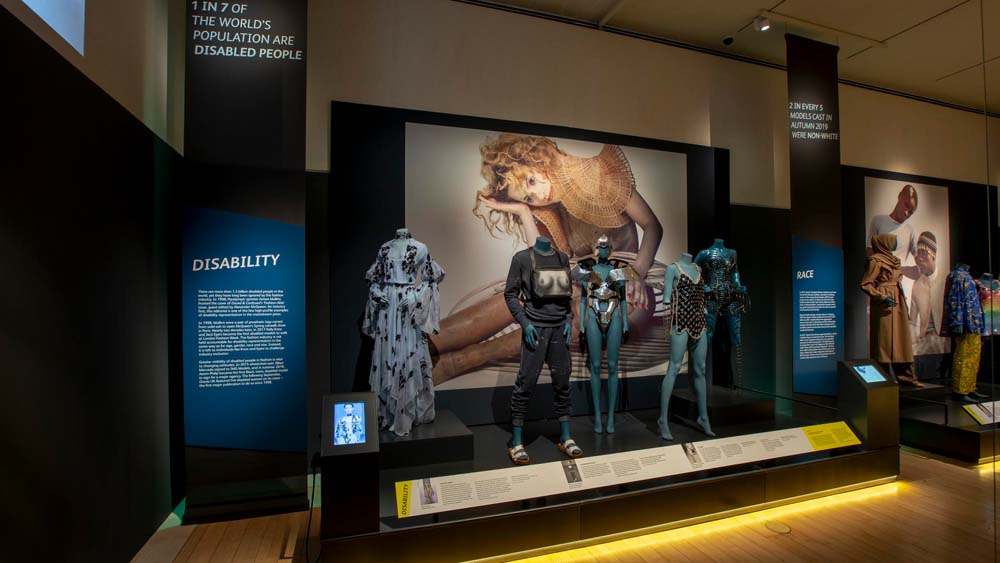There are many aspects of a costume exhibition that involve the textile conservation team, but one of the most interesting, and at times difficult, is the selection and preparation of mannequins on which outfits will be displayed.
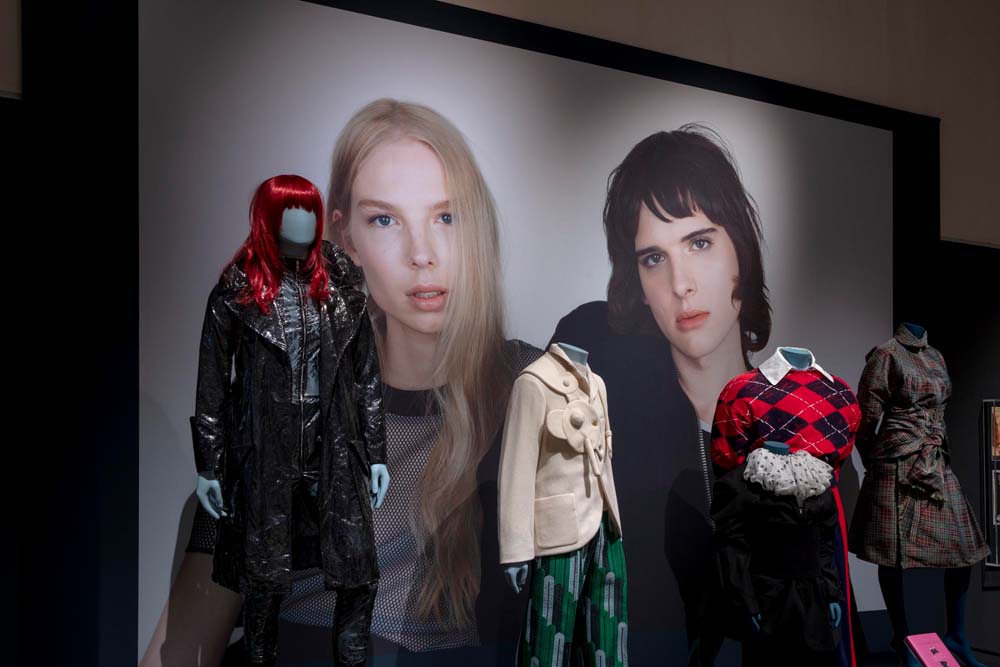
This blog post records the process for the Body Beautiful: Diversity on the Catwalk, an exhibition which by its very nature meant things were quite challenging.
We started work on the project about a year before it was installed, with an exhibition brief and an object list from Senior Curator Georgina Ripley, that made interesting reading. In a change from the norm, the majority of the 26 garments would be lent to the museum by fashion designers, reflecting the evolving drive in the fashion industry to represent diversity in fashion. Many of these pieces are from collections shown in the last three years or less, but some, such as those from BodyMap, show that some designers explicitly included people from a wide demographic at a time when it was less common to do so.
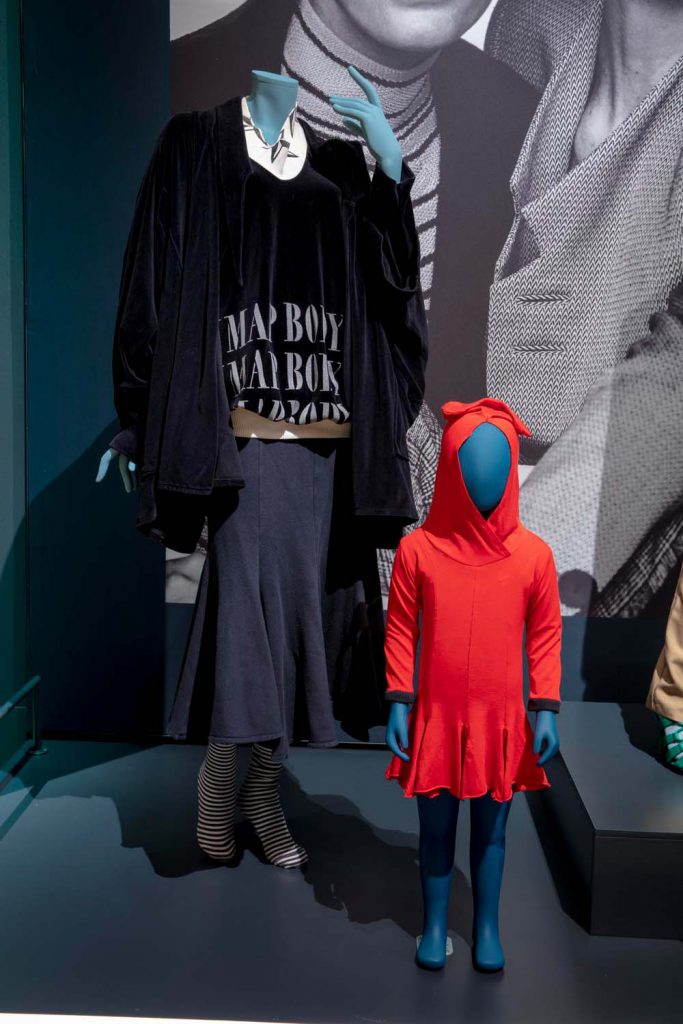
Outfit and Red Devil little girl’s skater dress, Cat in the Hat Takes a Rumble with Techno Fish collection, Autumn/Winter 1984. 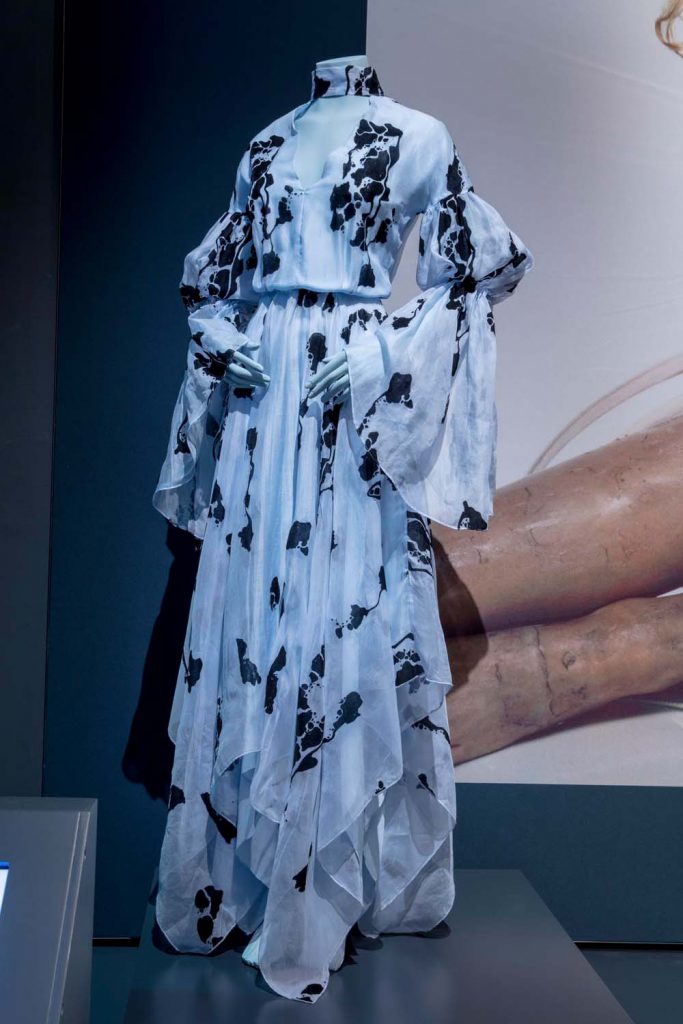
‘Alex’ dress, by Teatum Jones, The Body Part Two Collection, Spring/Summer 2018.
The procedure for ordering mannequins for exhibition display is often quite complex. For contemporary exhibitions we usually use fibre glass mannequins which come in many different styles. We measure objects as a starting point and begin to set them against possible mannequin styles from a variety of suppliers, refining the choice as we go. Many mannequins come in various slender figure types – e.g. petite, athletic, or teenage – but tended not to cater for other shapes. Perhaps most obviously, those with physical disabilities were hardly represented at all. Curve figures were generally sized very modestly at around a UK14, and whilst there was plenty of interest from the mannequin companies we work with to develop their lines, this is a fairly lengthy process which requires creating new moulds – something we simply wouldn’t have had time to do for this project. We decided from the outset to mix and match styles to achieve the best fit for the objects.
This meant we had three main elements to negotiate: firstly, we would not have the objects to measure up and work out what would work best for them until relatively late in the process. Secondly, and an even greater challenge, was that we had very little information to go on for many of the loans – some designers simply committed to lending a look or two in the first instance, without any information about what it might consist of. Lastly, we also needed to meet with the curatorial and design teams, learn more about the themes for the exhibition, and marry that with the overall style that the exhibition designer, Charlotte Hirst, had in mind.
In the meantime our Registrar team had to get on with bringing in the garments, involving much discussion, emails and extensive planning to get them delivered from as far away as Milan and New York. Objects began to arrive at our conservation facility from about September 2018 and by Christmas we had garments or good sizing information for about half the exhibition content. By this time, we were preparing to place an order for mannequins, factoring in the lead-in time for production and spraying, and allowing time for fittings and the installation period.
To meet the aim of diversity across the exhibition we were aware that the colour of the mannequins was very important. Their visual impact would be significant to the theme, and the immediacy of seeing figures on open display makes attention to detail quite significant. However, more crucially for the exhibition, the colour chosen needed to serve the diversity theme and avoid anything which could throw an unwanted interpretation on the content, such as the use of pink or blue, which have become culturally associated with specific genders.
Initial ideas included using a wide range of bright colours, but when we looked at the objects in this way it was clear that it wouldn’t work. Charlotte’s idea of a colour palette of shades of teal seemed to fit the bill, and when looked at with pictures of the garments we were excited by how well composed the groups looked. We decided on four shades and added in a couple with a metallic finish to add interest.
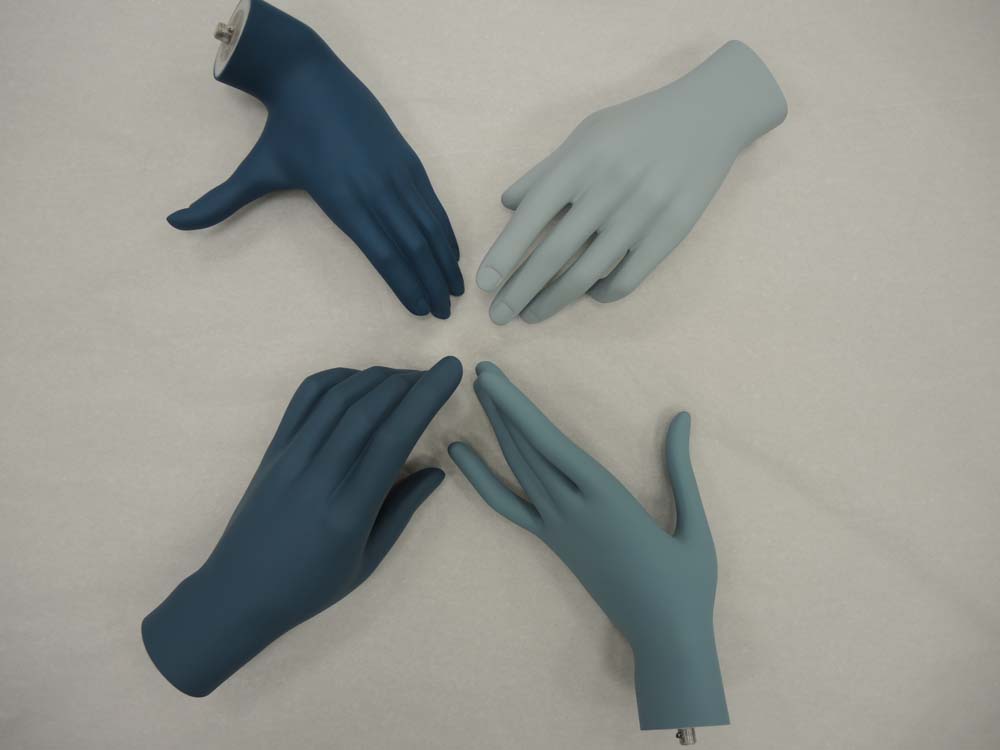
We worked with two companies to provide the mannequins: Hans Boodt Mannequins and Proportion London Ltd. We managed to recycle about six mannequins which had been supplied by Proportion for a previous exhibition, which meant that they only needed minor sanding and filling before respraying in the chosen teal shades. Sourcing Curve mannequins for museum use proved interesting.
We needed a size 18, and few companies supplied this size to museum standards at the time we did the research. However, Hans Boodt Mannequins, a company represented in London and based in The Netherlands, did have a range that met our needs, and so the four mannequins in this category were, happily, able to be ticked off our list. More suppliers are now producing curve mannequins for both museum and retail purposes since we worked on this project.
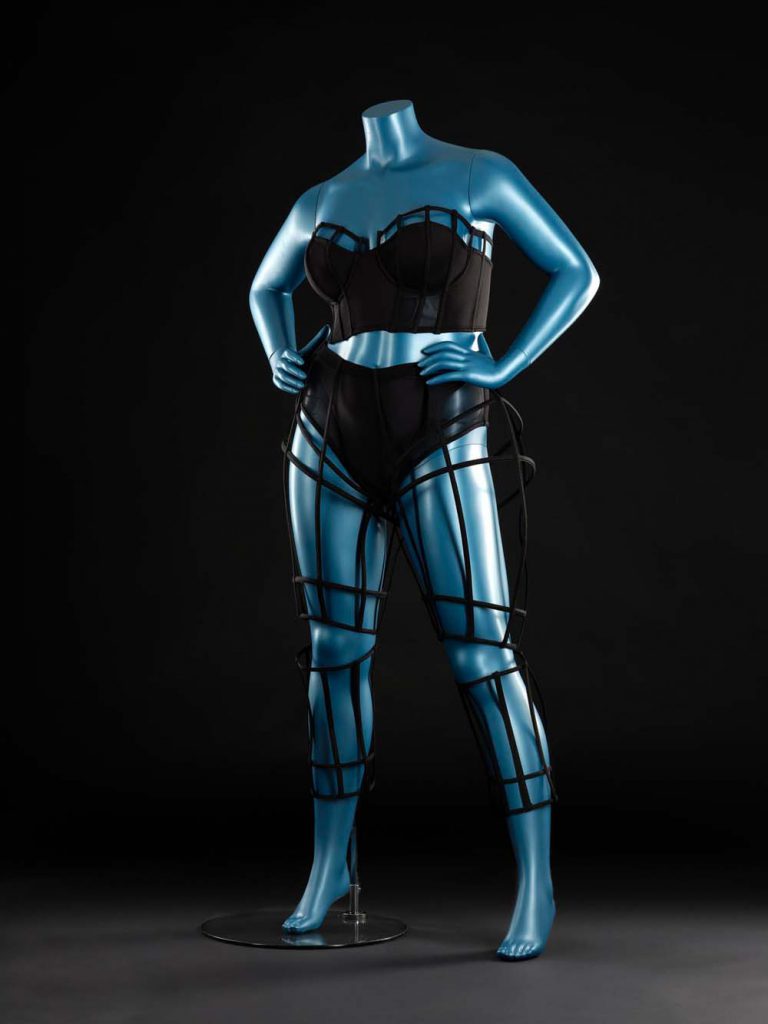
We were also thinking about the disability section. There were a number of challenges here for mannequins: two garments were lent by Sinéad Burke, who has instigated an on-going conversation with the fashion industry on inclusivity and representation for disabled people in fashion. Her presence and contribution to Body Beautiful was key, from her willingness to discuss disability issues as a little person with us and her insight and knowledge, to her impressive connections within the fashion world.
We also had three garments loaned to us by New York based company FTL Moda, designed by Anthony Urzi, for their “FTL Moda Loving You’ catwalk at New York Fashion week in 2015. The show included a cast of disabled male and female models, who were featured wearing an impressive array of futuristic bodysuits and full bodypaint (and sometimes little else). Of our loan, one costume was originally worn by Rebekah Marine, known as the “bionic model.” Born without a right forearm, Rebekah wears the i-limb quantum prosthetic hand, a myoelectric prosthesis controlled with electrical signals generated by the user’s own muscles.
Since Urzi’s designs thoughtfully considered the creative possibilities around disability representation, incorporating the model’s prostheses and disabilities into each look, we wanted to indicate the loss of limb on the mannequin without over-emphasising or using anything that could seem inappropriate to people with this type of disability. Initial discussion considered the use of prosthetics, such as those worn by Kelly Knox, see her vine arm by The Alternative Limb Project on display in the Technology by Design gallery:.
However, not only was sourcing the prosthetic an issue, but ensuring it was appropriately attached to the mannequin was a time issue we couldn’t manage. Alternative ideas focussed on a suggestion of a limb, using a stylized metal body part. This was shared with the consultants for the project before working with Proportion London Ltd to develop the idea. The resulting wire limb was cast in an unfinished raw metal, and in our view worked well with both the colour of the mannequins and the futuristic style of the costumes.
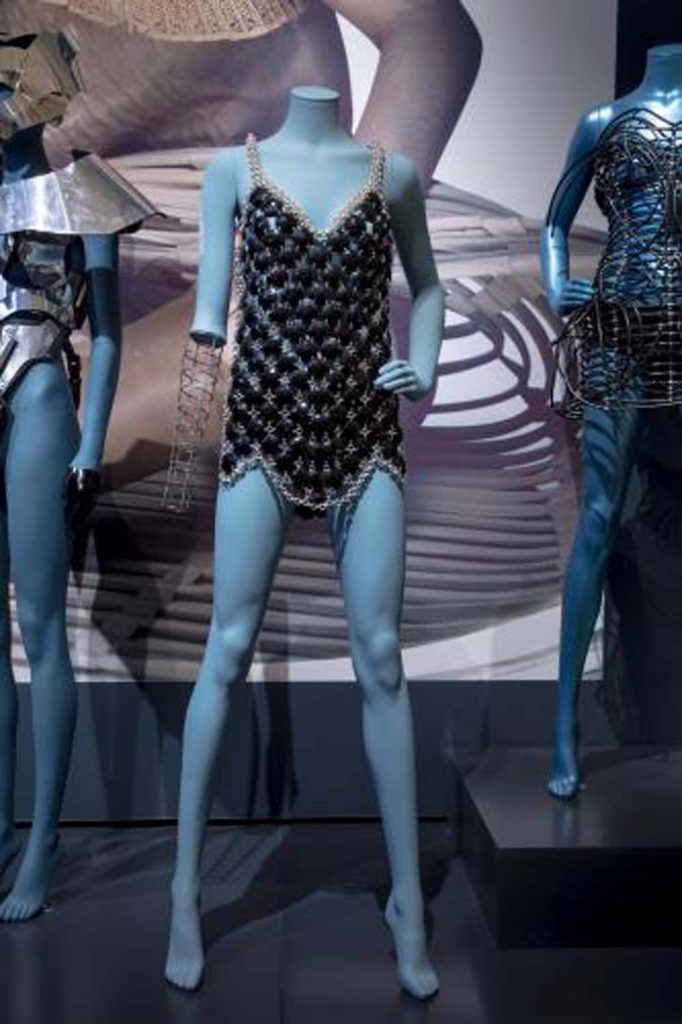
Also, the wire limbs seemed to suggest a loss of limb without exactly defining what or why the loss had occurred, providing instead a simple visual prompt to the viewer and challenging the perception of the body in relation to the standard mannequin figure.
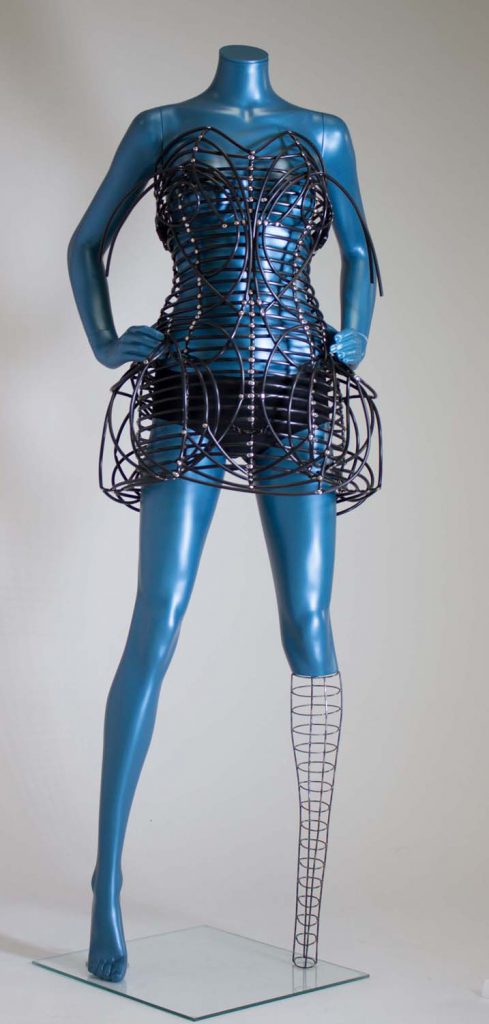
The mannequins which took the longest to develop were those we worked on for Sinéad Burke.
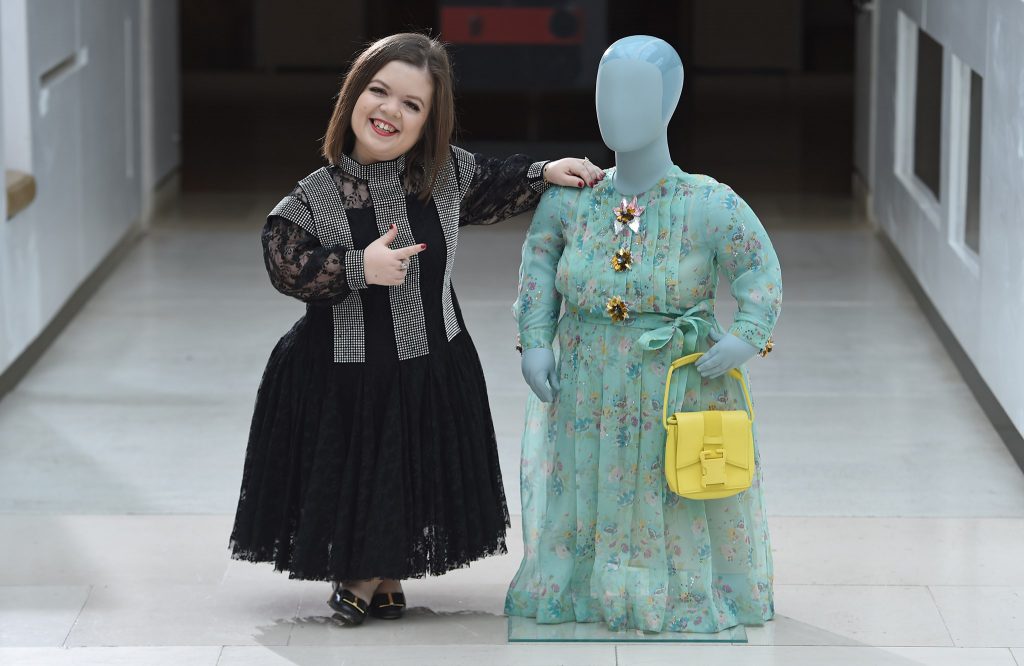
No mannequins were available for a little person, and so we had to develop something completely new with the supplier, Proportion London. Initial discussions with Proportion London were along the lines of significantly altering a figure from an existing collection. Production and Development Manager Gaetano Miraldi concluded this would not be a good solution, as the typical body ratios of someone with Sinéad’s condition, achondroplasia, would mean that the resulting figure would not offer a true likeness. With involvement from Sinéad herself, Proportion suggested that they make a ‘life mould’ from her body, as this would result in a better fit for the clothes,and offer an accurate representation of her. Proportion London came up trumps and was very happy to develop the idea further, working with the museum and Sinéad to make it happen.
We all learned a lot from this process, which took about 5 months to complete. Initially only Sinéad’s legs were moulded, as we all hoped that other mannequin parts could be used for the torso and arms.
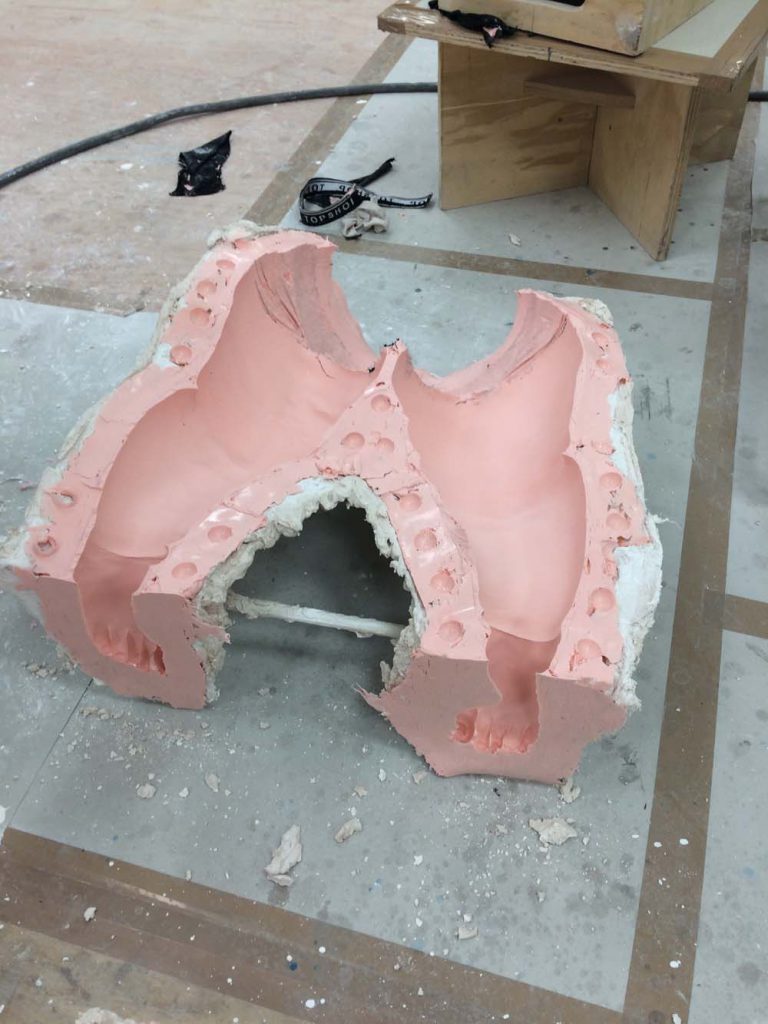
However, as it became apparent that this would not work, Sinéad underwent full moulding of her torso, hands and arms. The process was long, taking about four hours for each mould, during which Sinead had to stand still with all the attendant plasterwork and scaffolding making the mould of her body.
“This was the first time we’d done a life cast so we were very pleased with how smooth the process went, which Sinéad strongly contributed to by standing incredibly still for a total of ten hours so we could accurately cast her body.” – Production and Development Manager, Gaetano Miraldi
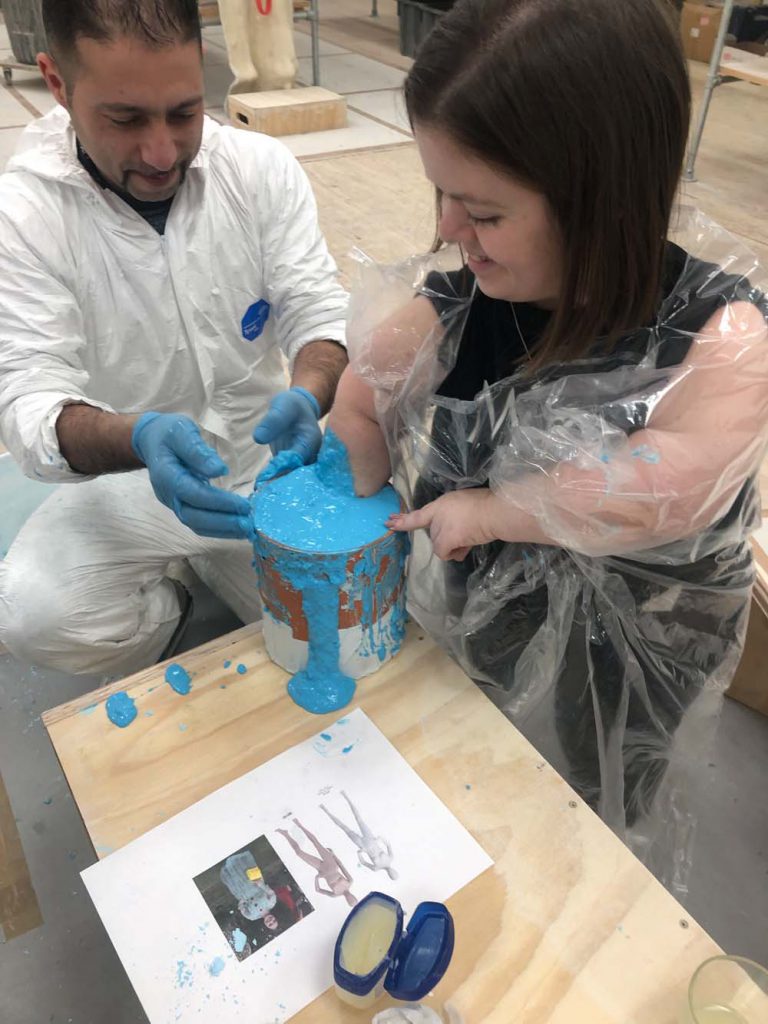
Sinéad during the hand casting. 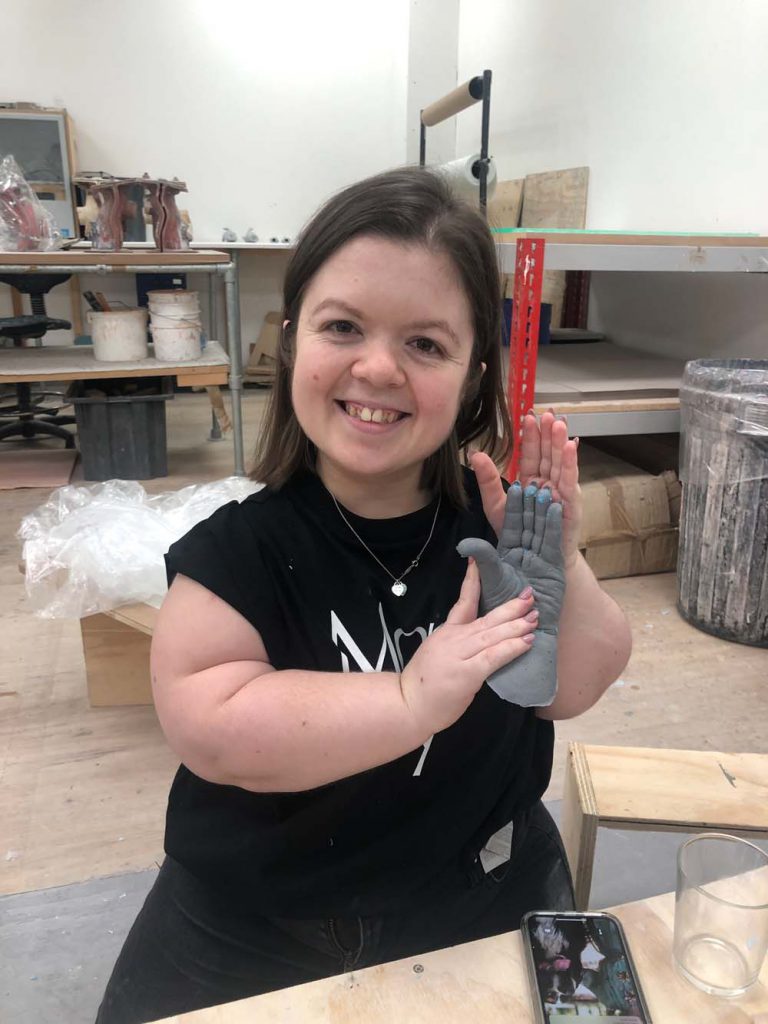
The completed result.
Heads were required for these mannequins as the Burberry outfit included the ‘crown’ cut from the cuff of the coat and worn by Sinéad on her head in the photoshoot. As the two mannequins were created in Sinéad’s image, we decided to take things a step further and create an accurate reflection of her real hair as Sinéad’s signature bob is a big part of her look. Much discussion followed, and we eventually employed sign writer Thomas Payne of Thomas Paints to paint hair stylised in the manner of Sinéad’s own to complete the looks.
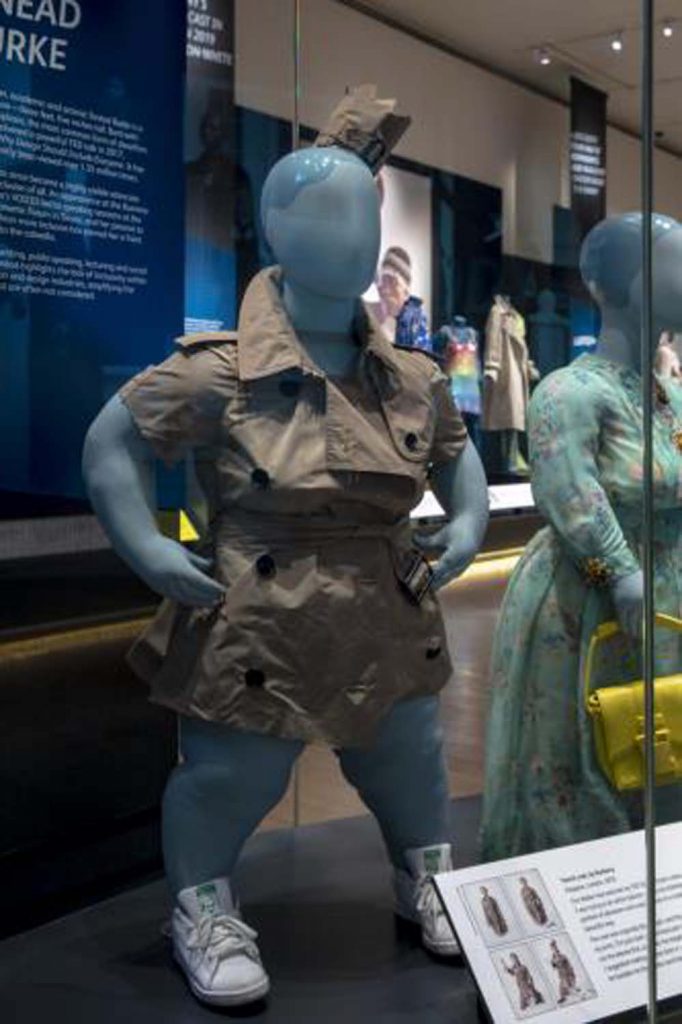
Ultimately the textile team could not have achieved the look we did without significant input from Proportion London to create the fully bespoke figure and the help given freely by Sinéad Burke to make it all possible. We were extremely pleased and proud to have her direct input. Hereafter, we hope to maintain and develop these relationships to enhance our future displays – for as Sinead herself said, ‘it’s a disruption to the fashion system but there’s so much more to do.’
